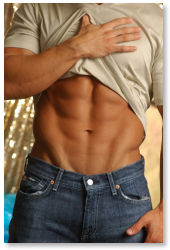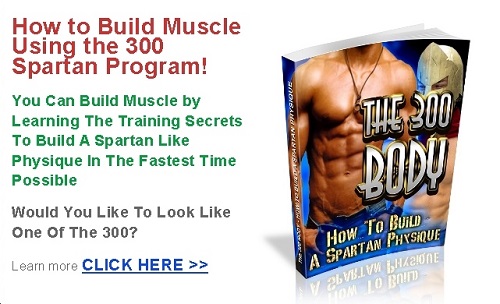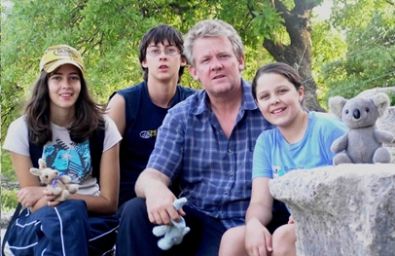| Back to Back Issues Page |
 |
|
How to Build Muscle for Your Sport" - Your Health Success ezine January 23, 2018 |
I hope you enjoy the e-zine as much as I do writing it. Index: Optimum Health Tip: Quote of the Day: Health Report: How to Build Muscle for Your Sport Recommendations & Sponsors Warren’s Notes Have a Laff! Inspirational Meme: Your ebook download "How to Live to 100" Thank you to my readers who refer other people to my ezine. If they want to subscribe for the next edition, they can just visit the website and subscribe here: SUBSCRIBE to eZine If you ever decide that you want to unsubscribe, you will find the link to do so at the bottom of this page. (But we will really miss you!) Optimum Health Tip:Tweak Your Recipes for Improved HealthYou probably have some favorite recipes lying around that are your "go to" meals for things like special occasions - or even everyday life! Look at how you can make each meal healthier and over time, you'll cut back on a lot of calories, salt and unhealthy ingredients. For example, if a recipe calls for one egg, use double the measurements - of the egg whites only! Or if it calls for something like sour cream or cottage cheese, you don't have to lose all of the flavor with a fat-free version, but go light or reduced fat instead. Use fresh seasoning that you develop to your own tastes rather than seasoning packets that stuff a whole bunch of salt in them. Try using peppers for added flavor - they're also a great way to kickstart your metabolism! Motivating Quotes:"Cutting back on calories is not the answer to successful weight loss and successful health... you have to increase the quality of what you eat, not just reduce the quantity." - Joel Fuhrman "The only secret to food combination is a balance of protein, carbs and fat - they all play a key role in our health." - Jorge Cruise "Happiness is good health and a bad memory." REPORT: "How to Build Muscle for Your Sport"
Generalized muscle building will help anyone develop muscle mass. But targeted muscle building can help you build muscle that’s specifically suited to the sport that you enjoy doing. When you work to build muscles in the area that’s used most often for your sport, this will help you to not only gain stamina and speed, but elevate your performance record as well. Building Muscle for Golf While golf seems like a quiet, relaxed game that’s not too demanding on the muscles of your body, you might be surprised to learn that it’s anything but that. In fact, golf is a game that uses many different muscle groups. Playing golf uses muscles from your upper to your lower body. It calls for players to use their chest or prectoralis muscles. But you also use your forearms as well as your back and core muscles. Your gluteus maximus or butt muscles are instrumental in helping your golf performance, too. It might not seem like it, but it’s these muscles that will help the most in improving your golf swing and help you gain distance with your shots. That’s because these muscles are responsible for your posture and the way that you move your hips during play. Your chest and back muscles are the ones used that influence the way that you swing the clubs and whether or not your swing plane stays intact so the ball goes in the direction you want it to. When you play golf, as you swing, your body does a rotating movement. This rotating movement is what gives the players power. You’ll want strong core muscles, because these muscles are not only your stabilizer, but they also work as your conduits. They’re what transfers the motion from the bottom of your body into your torso and back. A lot of people think that playing golf is successful or unsuccessful based on how built someone’s arm muscles are. While it’s true that you do need some muscle mass in the forearms to help you with your game, your forearms can only pass on the power from your body to put it into the swing. So if you have weak muscles in the core area or in your gluteus maximus, then that weakness will show up in your swing. Your forearms can’t compensate for weak muscles somewhere else in the body, and in fact, relying too much on your arms would ruin your game anyway. You’ll want to build muscle in your chest using bench presses with barbells or dumbbells as well as using pushups. To build muscle in the forearms, use a farmer’s carry using dumbbells. You can also do the farmer’s carry with kettlebells. Engage in towel pull-up repetitions and also wrist curls. Building muscle in your back means you’ll need to use a routine that calls for you to use barbell deadlifts, chin ups, cable rows, V-bar pulldown and a weight shrug using dumbbells. These exercises build the trapezius as well as the latissimus dorsi. When you need to build your core muscles, you’ll want to perform exercises such as push-ups, hip lifts, plank exercises, squats and lunges. Building the butt muscles means you’ll need to do lunges, squats and step-ups. Doing these exercises will help your golf game because you’ll be able to rotate your hips with more power and have that power transfer from the core muscles into the forearms. You’ll also gain a better sense of balance. Building Muscles for Walking or Running Surprisingly, whether you walk or run, you end up using the majority of your body’s muscles. When you engage in walking or running as a sport, it’s important that you know how to build strength to help you. The muscles that are used in either sport are identical. You use your abdomen, the calf muscles, your hamstrings, the butt muscles, quadriceps, thighs and hips. You also use your shoulders, biceps and forearms. Those muscles are the ones that you’ll want to concentrate on building up. For the hamstrings, concentrate on deadlifts including one-legged deadlifts using weights. You’ll also want to perform plenty of reps using leg curls. When it comes to building forearm muscles, weights are your friend. Use kettlebells as well as hand weights in varying weight sizes, gradually increasing the weight limit. Lunges and step-ups are the best way to build up the butt muscles. For the abdomen, it’s the use of repetition exercises that will build those muscles. You’ll want to do planks, bicycle crunches, ab wheel exercises and sit-ups using weights. Calf muscles are built using calf raises, both standing and seated, box jumps and jumping squats. Your thigh muscles benefit from squats, lunges and curls. The quadriceps can gain muscle with the use of barbell lunges, barbell squats, bench jumps, and with box and front squats. The biceps can be built using pushups, arm and squat curls. When you exercise to build the muscles that you use in walking or running, you gain a lot more besides just endurance that can help you last for whatever event you’re training to take part in. You can increase the speed in which it takes you to cover a distance. Because controlling your breathing is invaluable during walking or running to keep you from getting winded, using the exercises specific for these sports can increase your respiratory function. Building Muscles for Rowing Rowing for sport requires precision and strength. The sport is separated into classes for competition and is an Olympic sport. You have to do more than simply be in good physical shape to row for sport. You need to have or know how to build muscle in the major muscle groups that you’ll be using. In this sport, you’ll use your biceps and quadriceps as well as your back and shoulders. You’ll also use your hamstrings and butt muscles as well as your core muscles. It’s important that you have and maintain all over muscle fitness, but for rowing, you’ll really need to focus on the muscles that will impact your performance. To build strong muscles in those areas, there are certain exercises you’ll want to make a regular part of your routine. You’ll want to use deadlifts and squats because these build your hamstrings as well as your butt muscles. Have plenty of bench press repetitions on the schedule for helping to build the back and shoulder muscles. You need a lot of upper body strength in rowing and bench presses can help you obtain that. Your biceps handle a lot during rowing. Build up those muscles with plenty of curls. All of the muscles that you’ll work out play an important role in rowing. You need to build them up for strength and stamina. Working out the biceps gives you strength in your grip. Exercises that work out your hamstrings help give you stability during rowing. Building muscle in your core muscles help you increase your timing when you push back as you row. It can increase your drive through the water against the resistance. (continued below...) Recommendations & Sponsors:Our Sponsors and Affiliates are what keep this newsletter and our website self help books, articles and resources free to you, so we appreciate your support when purchasing from our sponsors.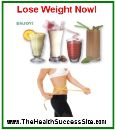 I'd love to help you with your optimal health and weight goals! Learn more here (<= tap or click image button)about the products that I've been taking myself for over 25 years, and that have helped millions of people. I'd love to help you with your optimal health and weight goals! Learn more here (<= tap or click image button)about the products that I've been taking myself for over 25 years, and that have helped millions of people. Products can be ordered online and delivered to your door almost anywhere in the world. Open the page with password: WT (in capitals) I have been involved in sports all my life, and in my 50's I started serious weight lifting. My goal is to enter competitions after my 60th birthday and challenge the Australian categories in my age group.
Being asked for a Password to view a site page? Not a problem! Just enter WT (in capitals)to open the page.
REPORT: "How to Build Muscle for Your Sport" continued:Building Muscles for VolleyballPlaying volleyball is a fun sport, but it’s a lot more demanding on the body that it first appears to be. Members who play this sport end up working out almost every major muscle group in their body. It’s also a sport that’s incredibly demanding. This means that it can be hard on the muscles and the joints if you’re not working on building up the muscles that are used during play. The muscles that are used during volleyball include the shoulder and chest as well as the abdomen and back. The hip flexors and butt muscles are used, too - along with the quads, hamstrings and calves. To play volleyball as a sport, you have to have great core strength. So your workout should consist of exercises that target all of your major muscle groups. Your quads, hamstrings and calves need raises, squats and lunges to build muscle. Your butt muscles are your body’s biggest muscle and they need step-up exercises as well as butt lifts and kneeling squats. For the shoulder and chest area muscles, you’ll want to do shoulder presses, laterals and push-ups. The abdomen needs side crunches, prone plank exercises and squats while the back needs a workout routine that includes deadlifts, pull-ups and chin-ups and leg curls. In volleyball, you have to make a move in a split second and you never know what that move is going to be. By working out the muscles needed in volleyball, you can increase your performance. Building muscle in the legs gives you the necessary power and thrust that you need when moving to block. Building the muscles also helps to keep you off the injured list. Building Muscles for Basketball Basketball is another sport that uses the majority of the body’s muscles. But there are some that it primarily relies on. These muscles are the quads, calves and hamstrings - along with the shoulder, upper chest and arm muscle, such as the triceps and biceps. The abdominal muscles are used along with the lower back muscles. Players use their legs a lot during play for making the moves that they need to get the ball, shoot the ball and run down the court. The thigh muscles give players lift while the calves work to tightly control the movement, whether out and out running or short sprints. To get the ball where it needs to be, the triceps are instrumental. Your effort to get the ball into the basket will be weak if the triceps aren’t fully conditioned. When it comes to going on the offensive, you’ll need your shoulders and chest area to take the blocks and get to the basket. You have to make sure that you have plenty of muscle built in your core because these muscles help you quickly dart around other players and make sharp moves when you need to dart one direction or another. Exercises to build muscle for playing basketball are made up of ones that work the entire body. The purpose of these exercises is to build strength and stamina. You’ll need to do chin-ups and high pulls as well as front squats. Lunges need to be a part of your workout, as do push-ups and bench presses. You’ll want to do step-ups, but while you’re doing these, make sure that you’re using dumbbells to increase the strength and shooting capacity of your biceps. When you play basketball, you must be able to defensively block, take a shoulder hit from another player, shoot from long or short distances and move down court in a second. By building the major muscles, your playing skill will increase. Building Muscles for Football Football is one of those sports that puts the body through a tough series of motions. The sport is strenuous enough so that your entire body gets a workout during play. That means that you have to work on building muscle in both the upper as well as the lower body. You need to strengthen and add mass to your hamstrings as well as your butt muscles, because these are used to push forward during the various plays. You’ll be doing a lot of running - and that calls for some serious leg movements. The quadriceps need to be strengthened, because you use these to move your knees. The chest muscles need to be built to give you the strength you need to stand strong against an opposing player. Your shoulder muscles are used during plays to get the ball down the field or to another player and the abdominal muscles are used to help maintain your stability. The triceps give you range of motion for throwing and blocking plays. You have to have strong core muscles, because these allow you the freedom of movement as you leap and turn to catch a pass. To build your muscles into football ready shape, you need to concentrate on compound exercises, because these give you muscle growth in both the upper and the lower body. When you use compound exercises, you gain build at the same time over using isolation exercises. You need to include squats as well as bench presses in your routine. Also have snatches as part of your compound exercises, because these help with faster muscle contractions. Building Muscles for Soccer With soccer, you use some of the same muscles that you use in playing football - especially the legs. You’ll be using the upper and lower body as well. You’ll be using the shoulders and the biceps and triceps. The legs and thighs are the primary muscles used, but so are the core muscles. You need to build muscles in the arms, especially in the shoulders, because these muscles help players maintain balance when they’re aiming to head shot the ball. When it comes to playing soccer, you have to be fast. You also have to be able to maintain control of the ball. Most people assume that the lower leg muscles are the most important part of the leg when it comes to playing soccer, but it’s actually the thigh muscles. These muscles are what provide the player with the speed, control and power needed to kick the ball to a team mate or the goal net. The calf muscle needs to be strong so that players have better foot control when moving the ball. A weak calf muscle will equal poor control over the foot movements. You want to be cautious when building muscle for soccer, because if you bulk up with too much muscle mass, that can actually slow down your ability to play. You want to concentrate on exercises that make you faster. These will be exercises like split squats, lunges, box jumps and deadlifts. Building muscle is a wonderful thing to do for anyone who wants to engage in physical fitness. But when it comes to playing sports, not only does it help you achieve your goals in terms of playing the game and scoring, but it helps prevent injuries as well. You can learn more here about what's involved with successful body building for fitness and sports. We hope you found this report helpful to you and that you will put the content to good use for improving your health and wellbeing. Learn more about improving your general health by getting better Nutrition for your Cells We also have a free report that you can download when you are there about this subject! We wish you well in your search for healthy diet solutions and your movement towards better health in all areas. Contact Us if you would like a free private consultation with us about your health online. To open page linked to below just enter WT in the password box on the page. 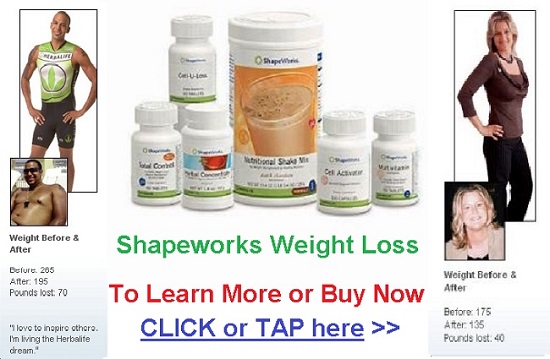
Warren’s Notes : Hi,
Hi, This week we are talking about building muscle for your sport. Personally, I have been focusing on this for a while since having that hip replacement in the middle of last year. It has been a slow process, without adding too much stress on the hip. It has been a good chance to work on upper body strength but there has been only broad exercises for lower body. I have been taking my Labrador for his walk/run in the evenings out in the state forest near town. I drive, he runs. Lately I have been parking the car and we have a half hour walk and we walk together. On Saturday morning we walked for an hour, with no problem with the hip so we have reached a new milestone on the recovery road! The other thing is pretty much what we were talking about in the article. In the gym, twice a week, Monday and Friday at 7 am, I do weight training. I've avoided putting stress on the hip for 6 months and now it 'should' be stable. I started doing 3 sets of 10 dead-lifts in the first week of January (where you pick up the weights on a bar and just lock in straight legs and straight back). That began on 30 kg (65lbs). Very light. We are increasing the weight by 10kg a week (a little over 20 lb) and will continue till there begins to be resistance or some stress begins to show in the hip. Like the article is saying above, think about what you need to do with exercise to be stronger and better at the things you choose to do. I thought it was worth mentioning that we do actually practice what we preach with the health tips. I hope you have a great week. Best wishes Warren
Remember, any time you want to learn more about anything in this ezine, or just need a chat about your health, drop me a line and I'll email back as soon as I can, and if you leave your phone number I'll even call you back on my dime! Have a Laff!Get Smart!A customer at Morris' Gourmet Grocery marveled at the proprietor's quick wit and intelligence. "Tell me, Morris, what makes you so smart?" "I wouldn't share my secret with just anyone," Morris replies, lowering his voice so the other shoppers won't hear, "But since you're a good and faithful customer, I'll let you in on it. Fish heads. You eat enough of them, you'll be positively brilliant." "You sell them here?" the customer asks. "Only $4 apiece," says Morris. The customer buys three. A week later, he's back in the store complaining that the fish heads were disgusting and he isn't any smarter. "You didn't eat enough, " says Morris. The customer goes home with 20 more fish heads. Two weeks later, he's back and this time he's really angry. "Hey, Morris," he says, "You're selling me fish heads for $4 apiece when I just found out I can buy the whole fish for $2. ...You're ripping me off!" "You see?" says Morris. "You're smarter already." Feel free to download and share the social media image below - ENJOY!
If you have any questions or would like to have direct contact to discuss anything related to this page, nutrition products or working with the nutrition industry then please send a note through the Contact Us form here on The Health Success Site And you can also learn more about me on my profile page here: Warren Tattersall ~*~*~*~*~
Thank you for joining us this week, I hope that you have found some extra motivation and inspiration to achieve lifetime optimal health! To update yourself on our new resources and lifetime optimal health strategies just go to
Your Health Online at The Health Success Site Your Editor,
Just mouse over the link below and click "right mouse button" and select "save target as" from the window that appears, to save this 200+ page book to your computer ENJOY!
~~~~~~~~~~~~~~~~~~~~~~~~~~~~~~~ DISCLAIMER: All information is intended for your general knowledge only and is not a substitute for your counselor’s advice or treatment. Use of these products and tips are at your own risk. We make no warranty, express or implied, regarding your individual results. ~~~~~~~~~~~~~~~~~~~~~~~~~~~~~~~ DISCLOSURE: I may be an affiliate for products that I recommend. If you purchase those items through my links I will earn a commission. You will not pay more when buying a product through my link. In fact, I oftentimes am able to negotiate a lower rate (or bonuses) not available elsewhere. Plus, when you order through my link, it helps me to continue to offer you lots of free stuff. :) Thank you, in advance for your support! No Liability This product is provided “as is” and without warranties. Use of this product indicates your acceptance of the "No Liability" policy. If you do not agree with our "No Liability" policy, then you are not permitted to use or distribute this product (if applicable.) Failure to read this notice in its entirety does not void your agreement to this policy should you decide to use this product. Applicable law may not allow the limitation or exclusion of liability or incidental or consequential damages, so the above limitation or exclusion may not apply to you. The liability for damages, regardless of the form of the action, shall not exceed the actual fee paid
for the product. Note: Articles in this ezine may concern health treatments and references to trademark brands. These articles are supplied for entertainment purposes only. Any claims that are made in your use of them and any consequences of your use of them are your own responsibility. You are advised to take legal advice in relation to setting up disclaimers and other aspects of your business. ~~~~~~~~~~~~~~~~~~~~~~~~~~~~~~~ Unsubscribe only if you want to stop receiving this ezine. Instructions are below. ~~~~~~~~~~~~~~~~~~~~~~~~~~~~~~~ |
| Back to Back Issues Page |

